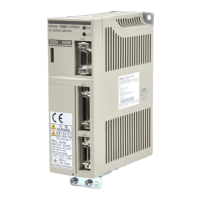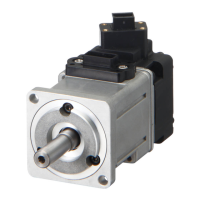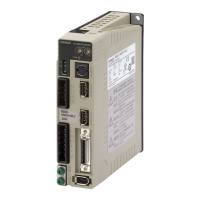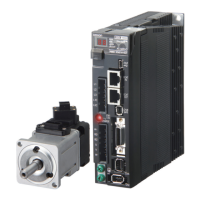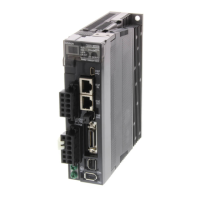3-46
3-4 Adjustments and Dynamic Braking When Load Inertia Is
Large
The value that is given for the Servomotor’s applicable load inertia is the value that will
not damage the Servo Driver’s internal circuits (dynamic brake circuit, regenerative cir-
cuit, etc.) when control is basically stable and the operating status is normal. When the
Servomotor is used at the applicable load inertia or below, there are certain operating
conditions and precautions that must be observed when making adjustments and using
the dynamic brake. For details on regenerative energy processing, refer to 3-3 Regen-
erative Energy Absorption.
3-4-1 Adjustments When Load Inertia Is Large
Operation is possible with a large load inertia as long as the load torque is within a range that allows
Servo Driver control (i.e., no larger than the rated torque and within the electronic thermal range: these
depend on the motor speed and acceleration/deceleration). If the load inertia ratio is large, however,
adjustment becomes difficult using only the rigidity setting and autotuning, as shown below. The follow-
ing table lists the adjustment criteria according to the load inertia.
Load inertia
ratio
Adjustment criteria
Below 500% Adjustment is possible using mainly the factory settings or the rigidity setting function
(Fn001).
500% to 1,000% Adjustment is possible using mainly the rigidity setting and autotuning.
1,000% to 3,000% Adjustment may be possible using the rigidity setting and autotuning, but it may be nec-
essary to manually adjust settings such as the gain.
Above 3,000% Adjustment will be difficult using the rigidity setting and autotuning. Set the load inertia
based on mechanism settings, and manually adjust the gain.
3-4-2 Dynamic Braking When Load Inertia Is Large
Dynamic braking is used to brake the Servomotor by consuming rotational energy using a resistor. The
Servomotor’s rotational energy can be found by using the following equation.
Servomotor rotational energy – (1/2 × J × ω
2
) = 1/2 × J × (2 × π)
2
× (N/60)
2
J: Load inertia + Servomotor rotor inertia
N: Servomotor speed [r/min]
Therefore, if the load inertia ratio is large and the motor speed is high, the load on the dynamic brake
circuit will be great and there will be a risk of burnout. Burnout may also occur if the dynamic brake is
used repeatedly within a short period of time. Do not use the dynamic brake under conditions where the
maximum speeds or load inertia ratios shown in the following table are exceeded. For operating condi-
tions other than these, use the following equation: 1/2 × J × ω
2
= Constant.
System Design and Installation
Chapter 3
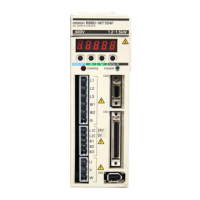
